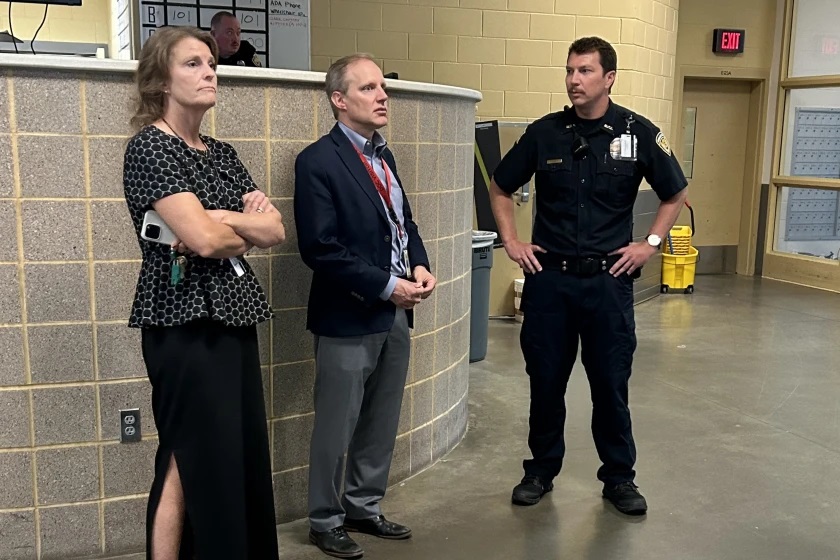Minnesota Secretary of State Steve Simon has been making the rounds to the state’s correctional facilities to explain to incarcerated people their voting rights once they are out of prison.
On Friday, he visited Minnesota Correctional Facility-Faribault where he spoke with about two dozen men mainly in the institution’s chemical dependency program. Most of those men are likely to get out of prison relatively soon, though only three men raised their hands when asked if they would be out by the time voting begins this November.
Last year, Gov. Tim Walz signed into law the restoration of voting rights for people convicted of a felony once they are out of prison. Previously, those convicted of felonies had to wait until they were off probation and paid any fines to vote.
Faibault’s prison is a minimum to medium-security prison that focuses on programming intended to ensure the success of its population once their prison terms are up. For example, the prison partners with several Minnesota colleges to provide higher education to the prison populace. About 25% of the men imprisoned in Faribault attend education programming.
Minnesota joined more than a dozen states with similar voting laws on the books, though the law did not go as far as legislation in Maine or Vermont which allows felons to vote while incarcerated.
“You have a right in the say of who governs you,” Simon told the men gathered in a prison room Friday.
He stressed that while he does not expect voting to be at the top of their list when getting out, he would like voting to at least be on it.
The law has survived one lawsuit challenging its passage but another one brought by a conservative law firm is before the Minnesota Supreme Court .
Simon said Friday his office is “very confident” the law will stay in place.
While the incarcerated men asked Simon typical questions during his presentation, one man asked if this was a campaign stump.
Simon replied he was simply informing them of their rights once they got out and that he wasn’t even on the ballot this year.
One man commented Friday that he felt like his voice had never been heard before and asked why she should vote.
“Communities that vote tend to get listened to,” Simon replied.
This year the Legislature passed a law requiring the census to count incarcerated people in the communities they are from, as opposed to the city their prison is in.
Related Articles
Biden plan to save Medicare patients money on drugs risks empty shelves, pharmacists say
Biden vs. Trump: Where they stand on Israel, Palestinians, Middle East
‘All hands on deck’: Trump vows to help GOP in House races
Biden to join Obama, salvo of Hollywood star power Saturday in LA
‘I was a MAGA activist. I was a MAGA true believer.’ He’s now creating a community for people who abandon Trump.




